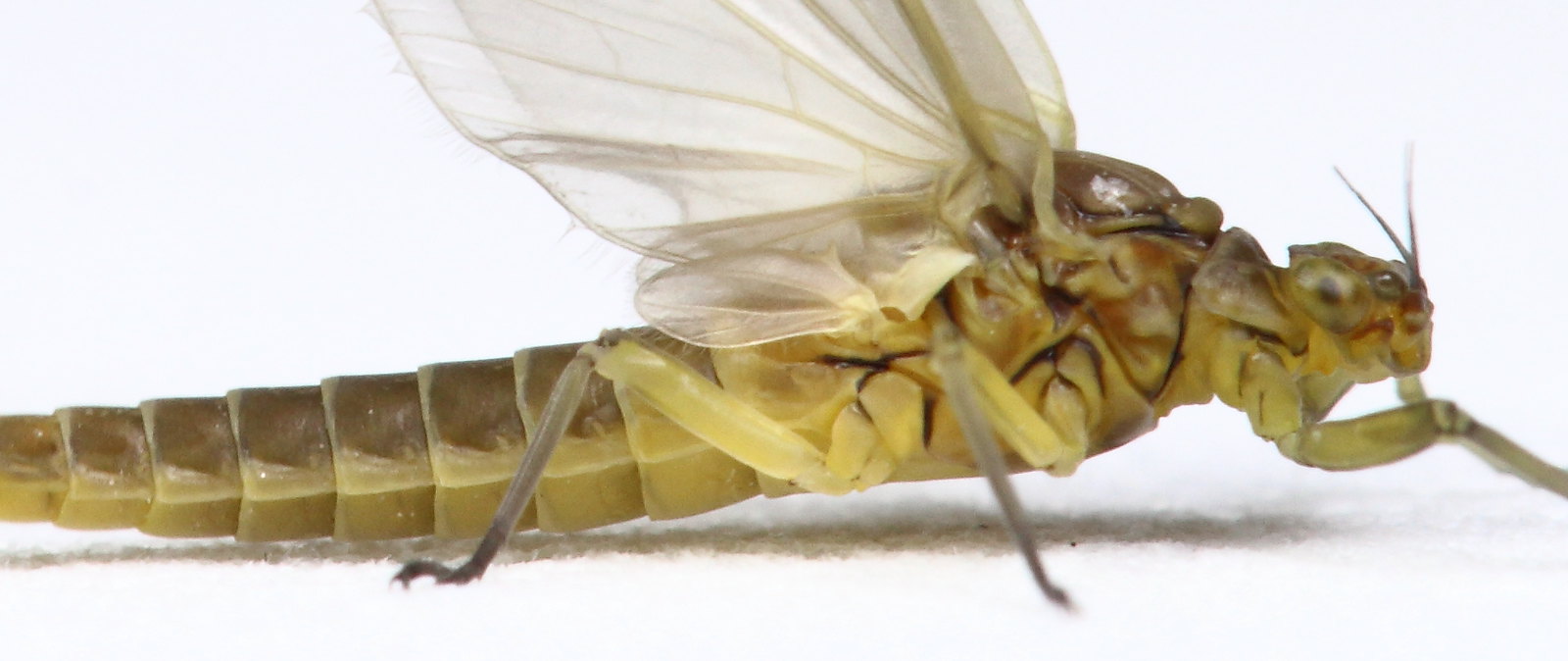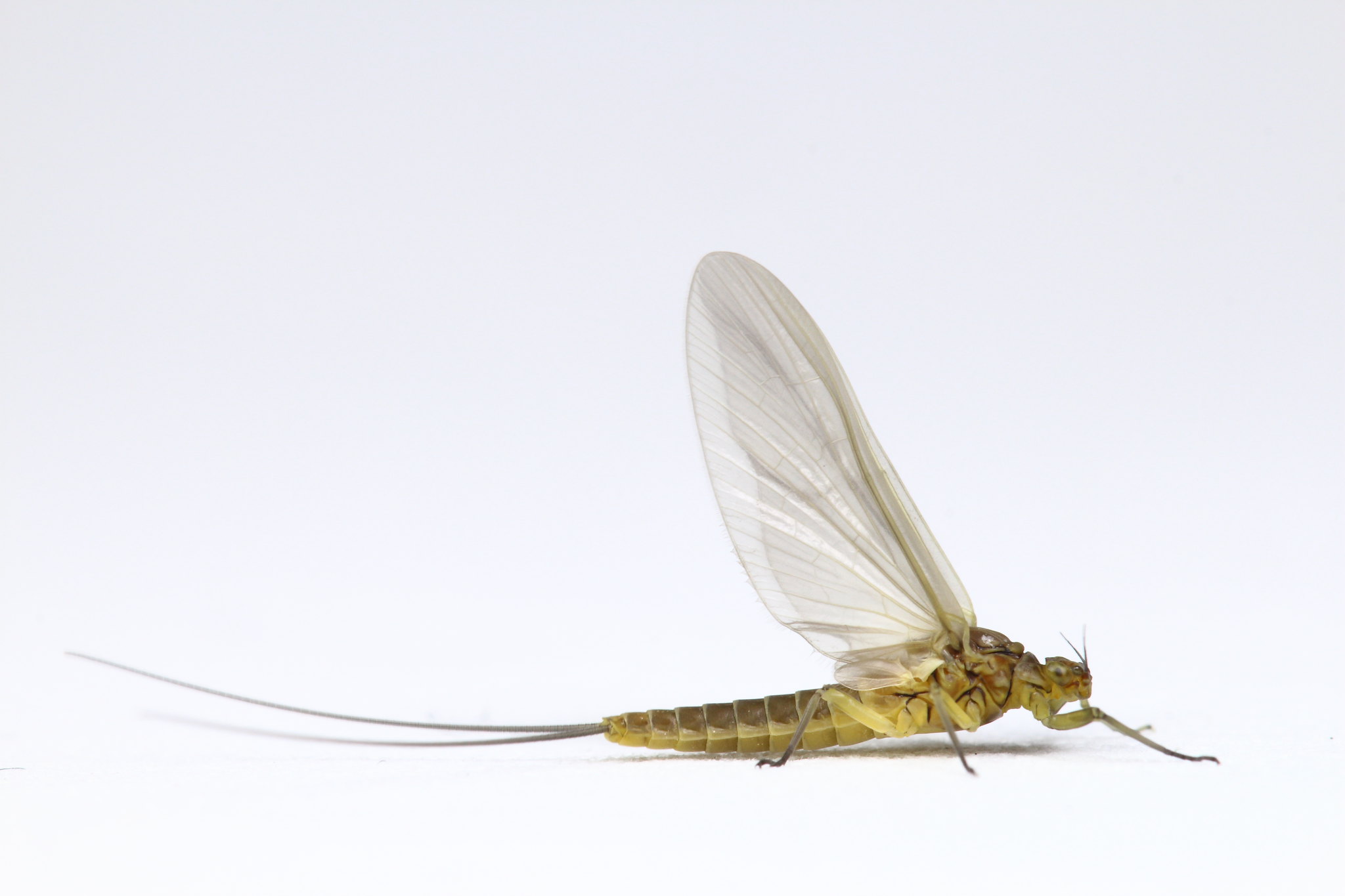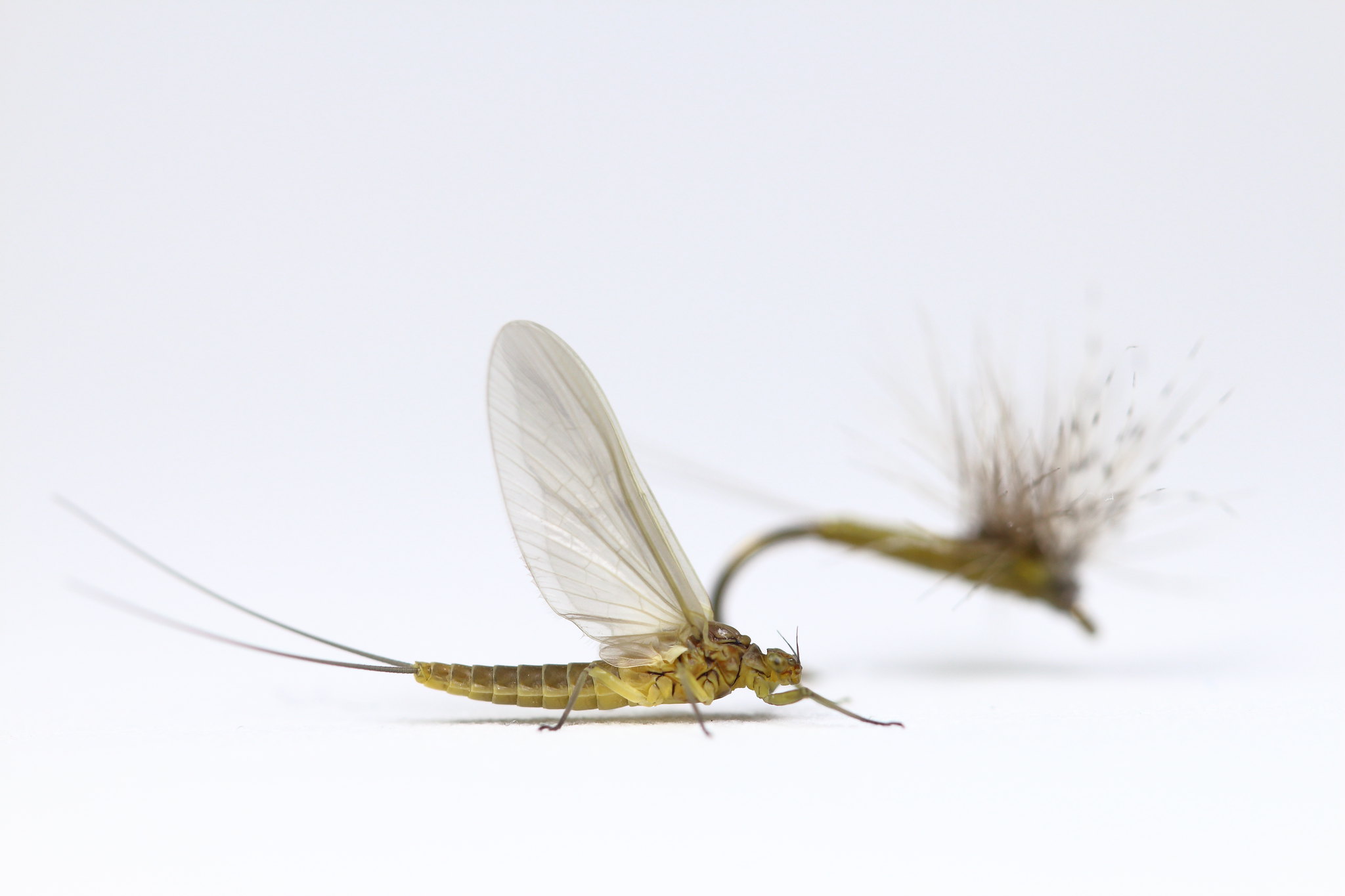A picture of a Baetis dun I posted on the FlyForums caused a bit of a debate. At the point of posting I didn't have a reference guide to work with and searching online didn't help. With most adult Baetis you need to get a clear detailed image of the hind-wing to properly identify the species; even then some species are still almost indistinguishable.
Normally the general size and colour will help get you to the point where you can start to narrow it down, the main issue myself and other posters had was the colour didn't come remotely close to what the hind-wing was telling us the dun was.
The hind-wing identified the dun as one of the three Iron Blue dun species - what wasn't especially clear is the presence of a third vein on the hind-wing - the forked vein is only found in the Iron Blue species. Only Baetis muticus, the Iron blue possess the third vein; B. niger, the Southern Iron Blue and B, digitatus, the Scarce Iron Blue have two veins one of which are forked, as is the middle vein of B. muticus.
 |
| Close up of the hind-wind showing the visible forked vein that identifies the dun as one of the Iron Blue species. |
Enough of us agreed that the specimen was probably Baetis muticus, but we were all puzzled by the colour of the fly, looking more like a Medium Olive (Baetis vernus) than any of the Iron Blue duns. Of course in fishing terms, knowing the identity of the duns hatching in front of you down to species level is largely irrelevant, as long as you match general size, shape and colour you ought to catch the fish on front of you. You can see from the pictures a light Barbour Paradun tied with plain yellow Pearsall's silk matched the dun well, the hook was a size 18 Partridge Supreme Dry, not your typical Iron Blue pattern.



Interesting Ben, and a classic example of how colour is an exceptionally unreliable identification medium where invertebrates are concerned. I remember fishing a fall of BWO spinners a few years ago where 50% of the females on the water were the classic 'sherry/mahogany' colour....and 50% were a bright greeny-gold colour. No idea why, but BWO spinners they most certainly were.
ReplyDeleteThat said, where Baetids are concerned it's sometimes a fallacy to get too wrapped up in telling one species from another. At least two species are scientifically indistinguishable in the females and other differences are so minor that it makes you wonder if we are looking so much at actually distinct species, or just variations of the same thing.
Anyway, for what it's worth I agree that you have yourself an iron blue there!
I agree Matt, it's really only for my own benefit to identify species, just an interest I've developed, but it does give food for thought about insect colours and variations.
DeleteBen.
ReplyDeleteI've a friend in France that is a real expert. His passion came from being a fly fisherman first,then an entomologist second. I find it fascinating myself and am still leaning after 40 years. Like Matt said, you really don't need to know the exact species, but colour size can be important at times. I have a few excellent books (now out of print and rare) you can borrow if you wish for exact identification, just ask.
Richard.